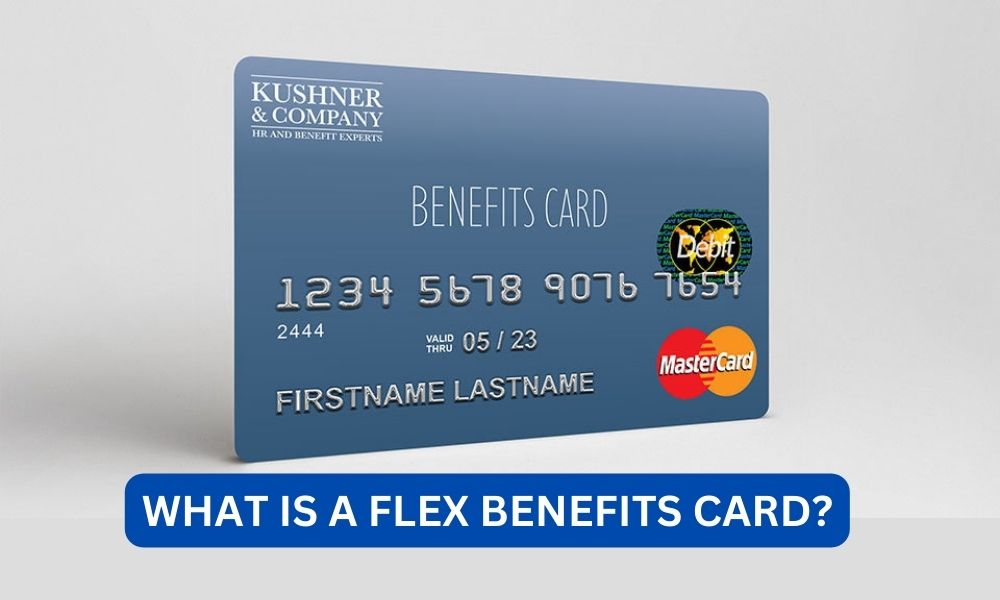In today’s fast-paced world, employee benefits have become an essential part of any job offer. Companies are constantly looking for ways to attract and retain top talent, and one way to do that is by offering a comprehensive benefits package. One of the most popular benefits offered by employers is a flex benefits card. But what exactly is a flex benefits card, and how does it work? In this article, we will explore the ins and outs of flex benefits cards and how they can benefit both employers and employees.
Contents
Understanding Flex Benefits
Flex benefits, also known as flexible benefits or cafeteria plans, are a type of employee benefit plan that allows employees to choose from a variety of benefits offered by their employer. These benefits can include health insurance, dental and vision coverage, retirement plans, life insurance, and more. The key feature of a flex benefits plan is that employees can customize their benefits package to fit their individual needs and preferences.
Traditionally, employee benefits were offered as a one-size-fits-all package, with little room for customization. However, as the workforce became more diverse and employees started to value different benefits, employers realized the need for flexibility. This led to the rise of flex benefits plans, which allow employees to choose the benefits that are most important to them.
Read:how long does a spouse get survivors benefitsWhat is a Flex Benefits Card?
A flex benefits card, also known as a flexible spending account (FSA) card, is a debit card that is linked to an employee’s flex benefits account. It works like a regular debit card, but instead of being linked to a bank account, it is linked to the employee’s flex benefits account. This means that employees can use their flex benefits card to pay for eligible expenses, such as healthcare costs, without having to pay out of pocket.
Flex benefits cards are typically issued by third-party administrators (TPAs) who manage the flex benefits plan on behalf of the employer. These TPAs work with the employer to determine the eligible expenses that can be paid for using the flex benefits card. They also handle the administration of the plan, including processing claims and managing the funds in the flex benefits account.
How Does a Flex Benefits Card Work?
To understand how a flex benefits card works, let’s take a look at an example. Sarah is an employee at XYZ Company, and she has enrolled in their flex benefits plan. As part of her benefits package, she receives a flex benefits card with a pre-determined amount of funds loaded onto it. Sarah can use this card to pay for eligible expenses, such as her monthly health insurance premium, co-pays for doctor visits, and prescription medications.
Read:What is hra benefits?When Sarah uses her flex benefits card, the funds are automatically deducted from her flex benefits account. This means that she does not have to pay out of pocket for these expenses. The card can be used at any healthcare provider that accepts debit cards, making it convenient for employees to access their benefits.
At the end of each month, Sarah’s employer will contribute a pre-determined amount of funds into her flex benefits account. This amount is usually determined during open enrollment, where employees can choose the benefits they want and the amount of funds they want to contribute to their flex benefits account. The funds contributed by the employer are tax-free, which means that Sarah does not have to pay taxes on this amount.
Benefits of a Flex Benefits Card
Flex benefits cards offer several benefits to both employers and employees. Let’s take a look at some of the key advantages of using a flex benefits card:
- Customization: As mentioned earlier, flex benefits cards allow employees to customize their benefits package to fit their individual needs. This means that employees can choose the benefits that are most important to them, such as healthcare coverage, retirement plans, or life insurance.
- Tax Savings: One of the biggest advantages of using a flex benefits card is the tax savings. The funds contributed by the employer are tax-free, which means that employees can save on their taxes by using their flex benefits card to pay for eligible expenses.
- Convenience: Flex benefits cards make it easy for employees to access their benefits. They can use the card to pay for eligible expenses without having to pay out of pocket or submit claims for reimbursement.
- Cost Savings: By allowing employees to choose the benefits they want, employers can save on the cost of providing a one-size-fits-all benefits package. This can also help attract and retain top talent, as employees value the ability to customize their benefits.
Case Study: The Benefits of Flex Benefits Cards for Employers
To better understand the benefits of flex benefits cards for employers, let’s take a look at a real-life case study. ABC Company, a mid-sized organization with 500 employees, implemented a flex benefits plan with flex benefits cards for their employees. Here are some of the key benefits they experienced:
Read:Are fringe benefits taxable?- Increased Employee Satisfaction: With the ability to customize their benefits, employees were more satisfied with their benefits package. This led to increased employee morale and retention.
- Cost Savings: By offering a flex benefits plan, ABC Company was able to save on the cost of providing a one-size-fits-all benefits package. This helped them attract and retain top talent without breaking the bank.
- Streamlined Administration: The use of flex benefits cards streamlined the administration of the plan, as employees could use the card to pay for eligible expenses without having to submit claims for reimbursement. This saved time and resources for both the employer and the employees.
Challenges of Using a Flex Benefits Card
While flex benefits cards offer several benefits, there are also some challenges that employers and employees may face when using them. These include:
- Eligible Expenses: Not all expenses are eligible for reimbursement using a flex benefits card. Employers and employees need to be aware of the eligible expenses to avoid any confusion or unexpected out-of-pocket expenses.
- Use-It-or-Lose-It Rule: Some flex benefits plans have a use-it-or-lose-it rule, which means that any funds left in the flex benefits account at the end of the plan year are forfeited. This can be a disadvantage for employees who do not use all their funds during the year.
- Administration: While flex benefits cards streamline the administration of the plan, there is still some administrative work involved in managing the plan and ensuring compliance with regulations.
Conclusion:
In conclusion, a flex benefits card is a valuable tool for both employers and employees. It offers flexibility, tax savings, and convenience, making it an attractive benefit for employees. For employers, it can help attract and retain top talent while also saving on the cost of providing benefits. However, it is important to be aware of the challenges and limitations of using a flex benefits card to ensure a smooth and successful implementation. With the right plan design and proper administration, a flex benefits card can be a win-win for both employers and employees.









